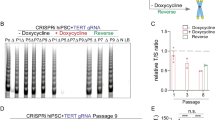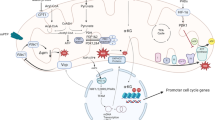Abstract
Myh7 is a classic biomarker for cardiac remodeling and a potential target to attenuate cardiomyocyte (CM) hypertrophy. This study aimed to identify the dominant function of Myh7 after birth and determine whether its removal would affect CM maturation or contribute to reversal of pathological hypertrophy phenotypes. The CASAAV (CRISPR/Cas9-AAV9-based somatic mutagenesis) technique was used to deplete Myh6 and Myh7, and an AAV dosage of 5 × 109 vg/g was used to generate a mosaic CM depletion model to explore the function of Myh7 in adulthood. CM hypertrophy was induced by transverse aortic constriction (TAC) in Rosa26Cas9-P2A-GFP mice at postnatal day 28 (PND28). Heart function was measured by echocardiography. Isolated CMs and in situ imaging were used to analyze the structure and morphology of CM. We discovered that CASAAV successfully silenced Myh6 and Myh7 in CMs, and early depletion of Myh7 led to mild adulthood lethality. However, the Myh7 PND28-knockout mice had normal heart phenotype and function, with normal cellular size and normal organization of sarcomeres and T-tubules. The TAC mice also received AAV-Myh7-Cre to produce Myh7-knockout CMs, which were also of normal size, and echocardiography demonstrated a reversal of cardiac hypertrophy. In conclusion, Myh7 has a role during the maturation period but rarely functions in adulthood. Thus, the therapeutic time should exceed the period of maturation. These results confirm Myh7 as a potential therapeutic target and indicate that its inhibition could help reverse CM hypertrophy.




Similar content being viewed by others
References
Cunningham, K. S., Spears, D. A., & Care, M. (2019). Evaluation of cardiac hypertrophy in the setting of sudden cardiac death. Forensic Science Research, 4(3), 223–240.
Wu, Q. Q., et al. (2017). Mechanisms contributing to cardiac remodelling. Clinical Science (Lond), 131(18), 2319–2345.
Sucharov, C., Bristow, M. R., & Port, J. D. (2008). miRNA expression in the failing human heart: functional correlates. Journal of Molecular and Cellular Cardiology, 45(2), 185–192.
Liu, J., et al. (2007). Progressive troponin I loss impairs cardiac relaxation and causes heart failure in mice. American Journal of Physiology-Heart and Circulatory Physiology, 293(2), H1273–H1281.
James, J., et al. (2010). Effects of myosin heavy chain manipulation in experimental heart failure. Journal of Molecular and Cellular Cardiology, 48(5), 999–1006.
Dirkx, E., da CostaMartins, P. A., & De Windt, L. J. (2013). Regulation of fetal gene expression in heart failure. Biochimica et Biophysica Acta, 1832(12), 2414–2424.
Shih, Y. H., et al. (2015). Cardiac transcriptome and dilated cardiomyopathy genes in zebrafish. Circulation: Cardiovascular Genetics, 8(2), 261–269.
Lowes, B. D., et al. (1997). Changes in gene expression in the intact human heart. Downregulation of alpha-myosin heavy chain in hypertrophied, failing ventricular myocardium. Journal of Clinical Investigation, 100(9), 2315–2324.
Marian, A. J., & Braunwald, E. (2017). Hypertrophic cardiomyopathy: genetics, pathogenesis, clinical manifestations, diagnosis, and therapy. Circulation Research, 121(7), 749–770.
Krenz, M., et al. (2003). Analysis of myosin heavy chain functionality in the heart. Journal of Biological Chemistry, 278(19), 17466–17474.
Tardiff, J. C., et al. (2000). Expression of the beta (slow)-isoform of MHC in the adult mouse heart causes dominant-negative functional effects. American Journal of Physiology-Heart and Circulatory Physiology, 278(2), H412–H419.
Krenz, M., & Robbins, J. (2004). Impact of beta-myosin heavy chain expression on cardiac function during stress. Journal of the American College of Cardiology, 44(12), 2390–2397.
Guo, Y., et al. (2018). Hierarchical and stage-specific regulation of murine cardiomyocyte maturation by serum response factor. Nature Communications, 9(1), 3837.
Guo, Y., et al. (2017). Analysis of cardiac myocyte maturation using CASAAV, a platform for rapid dissection of cardiac myocyte gene function in vivo. Circulation Research, 120(12), 1874–1888.
VanDusen, N. J., et al. (2018). CASAAV: A CRISPR-based platform for rapid dissection of gene function in vivo. Current Protocols in Molecular Biology. https://doi.org/10.1002/cpmb.46
Grieger, J. C., Choi, V. W., & Samulski, R. J. (2006). Production and characterization of adeno-associated viral vectors. Nature Protocols, 1(3), 1412–1428.
O’Connell, T. D., Rodrigo, M. C., & Simpson, P. C. (2007). Isolation and culture of adult mouse cardiac myocytes. In F. Vivanco (Ed.), Cardiovascular proteomics: methods and protocols (pp. 271–296). Totowa, NJ: Humana Press.
Guo, Y., et al. (2014). Concentration-dependent lamin assembly and its roles in the localization of other nuclear proteins. Molecular Biology of the Cell, 25(8), 1287–1297.
Guo, Y., & Zheng, Y. (2015). Lamins position the nuclear pores and centrosomes by modulating dynein. Molecular Biology of the Cell, 26(19), 3379–3389.
Chen, B., et al. (2015). In situ single photon confocal imaging of cardiomyocyte T-tubule system from Langendorff-perfused hearts. Frontiers in physiology, 6, 134. https://doi.org/10.3389/fphys.2015.00134
Spitzer, M., et al. (2014). BoxPlotR: a web tool for generation of box plots. Nature Methods, 11(2), 121–122.
Porrello, E., et al. (2015). Novel roles of GATA4/6 in the postnatal heart identified through temporally controlled, cardiomyocyte-specific gene inactivation by adeno-associated virus delivery of Cre recombinase. PLoS ONE, 10(5), e0128105.
Zhang, D., et al. (2018). Mitochondrial cardiomyopathy caused by elevated reactive oxygen species and impaired cardiomyocyte proliferation. Circulation Research, 122(1), 74–87.
VanDusen, N. J., et al. (2017). CASAAV: A CRISPR-based platform for rapid dissection of gene function in vivo. Current Protocols in Molecular Biology. https://doi.org/10.1002/cpmb.46
Guo, Y., & Pu, W. T. (2020). Cardiomyocyte maturation: new phase in development. Circulation Research, 126(8), 1086–1106.
Akerberg, B. N., et al. (2019). A reference map of murine cardiac transcription factor chromatin occupancy identifies dynamic and conserved enhancers. Nature Communications, 10(1), 4907.
Ho, C. Y., et al. (2018). Genotype and lifetime Burden of Disease in Hypertrophic Cardiomyopathy: Insights from the Sarcomeric Human Cardiomyopathy Registry (SHaRe). Circulation, 138(14), 1387–1398.
Wang, S., et al. (2020). AAV Gene Therapy Prevents and Reverses Heart Failure in a Murine Knockout Model of Barth Syndrome. Circulation Research, 126(8), 1024–1039.
Chen, J., et al. (2020). aYAP modRNA reduces cardiac inflammation and hypertrophy in a murine ischemia-reperfusion model. Life Sci Alliance, 3(1), e201900424.
Chen, B., et al. (2018). Reactivation of Dormant Relay Pathways in Injured Spinal Cord by KCC2 Manipulations. Cell, 174(3), 521-535.e13.
Suzuki-Hatano, S., Saha, M., Rizzo, S. A., Witko, R. L., Gosiker, B. J., Ramanathan, M., et al. (2019). AAV-Mediated TAZ gene replacement restores mitochondrial and cardioskeletal function in Barth Syndrome. Human Gene Therapy, 30(2), 139–154.
Acknowledgments
The authors thank Prof. William T. Pu in Boston Children’s Hospital for providing the AAV-related plasmid and Cas9 genetic mice. Also they thank Prof. Long-Sheng Song in University of Iowa Carver College of Medicine for sharing the AutoTT software in T-Tubule analysis.
Funding
This work was supported by grants from the National Natural Science Foundation of China (Grant No. 81700360).
Author information
Authors and Affiliations
Corresponding authors
Ethics declarations
Conflict of interest
The authors report no conflict of interest. The authors alone are responsible for the content and writing of the paper.
Additional information
Communicated by Shazina Saeed.
Publisher's Note
Springer Nature remains neutral with regard to jurisdictional claims in published maps and institutional affiliations.
Rights and permissions
About this article
Cite this article
Yue, P., Xia, S., Wu, G. et al. Attenuation of Cardiomyocyte Hypertrophy via Depletion Myh7 using CASAAV. Cardiovasc Toxicol 21, 255–264 (2021). https://doi.org/10.1007/s12012-020-09617-y
Received:
Accepted:
Published:
Issue Date:
DOI: https://doi.org/10.1007/s12012-020-09617-y




